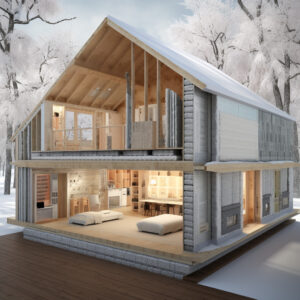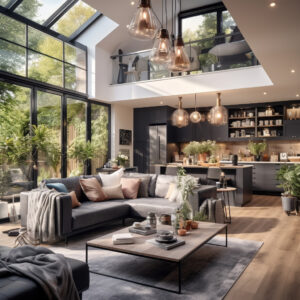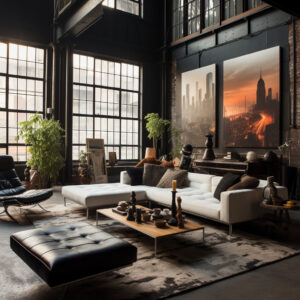Sustainable Design: How to Create a Greener, More Eco-Friendly Home
In today’s world, where climate change and environmental degradation are pressing concerns, the push towards sustainability has never been more critical. Interior design is not immune to these global challenges; in fact, it plays a pivotal role in constructing better living spaces that are not only comfortable and aesthetically pleasing but also responsible towards our planet. Sustainable Design in interior design is about finding the perfect balance between form and function while minimizing the ecological footprint. This approach goes beyond mere trends, resonating with a deeper ethos of care for the environment and future generations. With thoughtful choices and innovative practices, you can transform your home into a green haven that promotes well-being and sustainability.
Key Elements
When delving into the heart of interior design, there are several elements that craft the overall canvas of one’s living space. Each contributes to the aura and functionality of the home.
- Color Palettes: Color influences mood and perception. Sustainable design often leans on natural and earthy tones, promoting a sense of calm and blending seamlessly with eco-friendly materials.
- Furniture Arrangement: The placement of furniture can profoundly impact the flow and feel of a room. Sustainable design prioritizes dual-function pieces and layouts that maximize natural light and air circulation.
- Lighting: Energy-efficient lighting options such as LED bulbs are not only cost-effective but also reduce energy consumption, making them a staple in sustainable interiors.
-
Accessories: Choosing accessories made from recycled, upcycled, or sustainable sources adds character to your home and fortifies your commitment to the environment.
Tips for Sustainable Design
Crafting a sustainable interior involves careful consideration of several factors. Here are some tips to ensure your furniture choices align with a greener philosophy:
- Choose Quality Over Quantity
- Invest in high-quality furniture that will endure the test of time, reducing the need for frequent replacements.
- Opt for Eco-Friendly Materials
- Look for furniture made with sustainable or recycled materials such as bamboo, reclaimed wood, or recycled metal and plastic.
- Consider the Lifecycle
- Think about the entire lifecycle of the product, from production and use to disposal. Select pieces that can be easily recycled or upcycled.
- Prioritize Functionality
- Multi-functional furniture reduces clutter and the need for additional pieces, limiting resource usage.
- Support Ethical Brands
- Purchasing from companies that have a transparent and ethical supply chain ensures that your furniture is not only eco-friendly but also socially responsible.
FAQ about Sustainable Design
Question 1: What is sustainable interior design?
– Answer: Sustainable interior design is an approach that seeks to minimize the environmental impact of decorating and furnishing a living space. It involves using materials and resources in a way that is environmentally friendly, focusing on reducing waste, energy consumption, and harmful emissions.
Question 2: How can I make my home more eco-friendly?
– Answer: There are several ways to make your home more eco-friendly. You can invest in energy-efficient appliances, use low-VOC paints, incorporate plants to improve air quality, and ensure you have good insulation to reduce heating and cooling needs. Using natural light whenever possible and opting for LED lighting can also make a significant impact.
Question 3: Are there sustainable alternatives to popular materials like hardwood and granite?
– Answer: Absolutely! Bamboo is a fast-growing alternative to hardwood, while recycled glass or metal can be used instead of granite. Cork is another renewable material that is gaining popularity for its durability and sustainability.
Question 4: How does sustainable design contribute to energy savings?
– Answer: Sustainable design maximizes natural light and promotes better airflow, reducing the need for artificial lighting and air conditioning. Energy-efficient appliances and sustainable materials with good insulation properties also contribute significantly to reducing energy consumption.
Question 5: Is sustainable design more expensive than traditional interior design?
– Answer: While some sustainable products may have a higher upfront cost, they often lead to savings in the long run through lower energy bills and durability. Additionally, the market for sustainable design is growing, which is gradually bringing down the prices due to increased demand and advancements in green technology.
Creating a greener, more eco-friendly home through sustainable design is an investment in the future. Not only does it speak to a global consciousness, but it also provides a healthier living environment for you and your family. As you integrate these principles into your home, remember that every choice, no matter how small, adds up to create a significant impact. Sustainable design isn’t merely a style—it’s a mindset that aligns your living space with the betterment of the world we inhabit.




